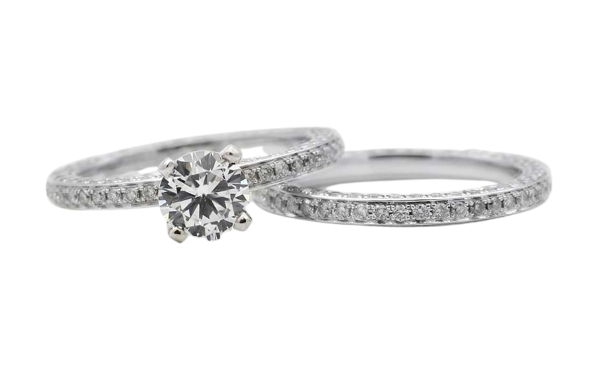Laboratory Grown Diamonds / Moissanite

Lab-grown diamonds are also created using extreme pressure and heat, but inside a machine rather than the bowels of the Earth.
There are two ways to grow a diamond. Both involve starting with the “seed” (a flat slither) of another diamond. The first lab diamond was made using a High Pressure High Temperature (HPHT) system, where the seed is then placed amidst some pure graphite carbon and exposed to temperatures of about 1,500C and pressurised to approximately 1.5 million pounds per square inch in a chamber.
More recently, another way to grow a diamond was discovered, called Chemical Vapor Deposition(CVD). This involves putting the seed in a sealed chamber filled with carbon-rich gas and heating to around 800C. Under these conditions the gases begin to “stick” to the seed, growing a diamond carbon atom by atom.
The technology behind lab diamonds has made crucial advances in recent years, allowing companies to grow higher quality diamonds more rapidly and more cheaply. It has meant growing competition between lab diamond and mined diamond companies.
